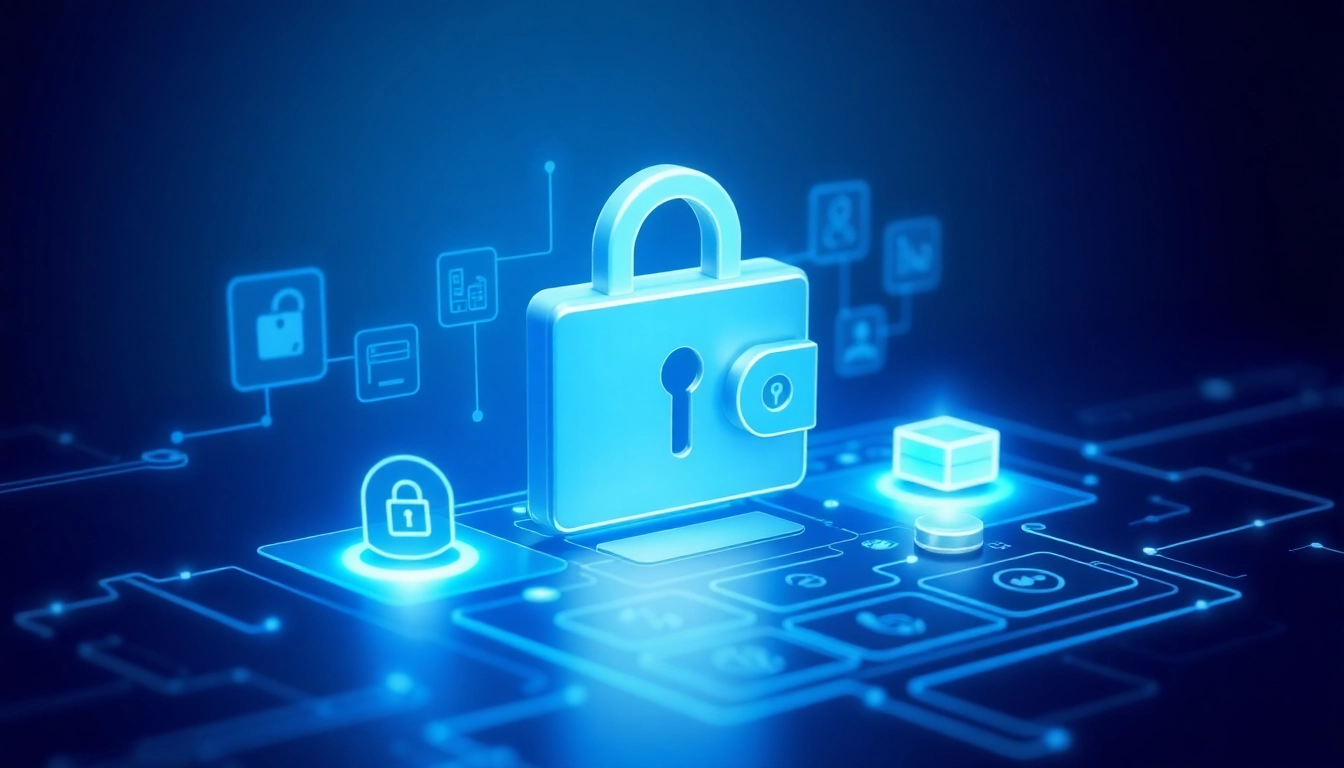Understanding Crypto Wallets: Types and Functions
What Is a Crypto Wallet and How Does It Work?
A crypto wallet is an essential tool for anyone engaging in digital currency transactions. It functions as a secure digital container that stores your public and private keys, allowing you to send, receive, and manage cryptocurrencies. Unlike traditional wallets that hold physical cash, crypto wallets do not store the actual coins; instead, they store the cryptographic keys that give access to the blockchain where your assets are recorded. These wallets enable users to interact with blockchain networks, verify transactions, and maintain control over their digital assets in a secure environment.
Typically, a crypto wallet generates a unique public address for receiving funds and a private key to authorize outgoing transactions. The private key must be kept confidential, as anyone with access can control your cryptocurrencies. The security and functionality of a wallet determine how effectively you can participate in the crypto economy—from simple transfers to complex DeFi interactions.
Different Types: Hardware, Software, and Web Wallets
Crypto wallets come in various forms, each with distinct advantages and security levels:
- Hardware Wallets: Physical devices like Ledger Nano S/X or Trezor that store your private keys offline. They excel in security, making them ideal for long-term storage of large amounts of crypto. Hardware wallets are resistant to online hacking attempts but require physical access.
- Software Wallets: Applications installed on your desktop or mobile device. Examples include Exodus and MetaMask. These wallets are convenient for daily transactions and access to Web3 applications but are more vulnerable to malware if the device is compromised.
- Web Wallets: Browser-based wallets like Trust Wallet accessible through web browsers without installing software. They offer quick access but rely heavily on the security of the browser environment and your device.
Each wallet type suits different user needs—security-focused investors prefer hardware wallets, while traders and Web3 enthusiasts favor software or web wallets for their ease of use and quick transaction capabilities.
How to Choose the Right Wallet for Your Needs
Selecting an appropriate crypto wallet depends on your investment goals, security requirements, and usability preferences. Consider the following factors:
- Security: For storing large or long-term holdings, prioritize hardware wallets or multi-signature solutions. For small amounts or frequent trades, software wallets with robust security features can suffice.
- Usability: Beginners may prefer user-friendly interfaces like Exodus or Trust Wallet, which simplify managing assets and transactions.
- Compatibility: Ensure the wallet supports the specific cryptocurrencies you hold, including emerging tokens or NFTs.
- Control: Self-custody wallets give you full control over your private keys, while custodial options are managed by third parties, reducing some security risks but increasing trust requirements.
- Backup and Recovery: Look for wallets offering straightforward backup options, such as seed phrases, to recover assets if devices are lost or damaged.
Balancing security and convenience is key. For most users, a combination of hardware wallets for savings and software wallets for daily transactions provides an optimal approach.
Importance of Security in Crypto Wallet Management
Best Practices to Protect Private Keys
Protecting your private keys is paramount to safeguarding your digital assets. Best practices include:
- Never share your private keys: Treat them like passwords; do not transmit or store them online where they can be intercepted or stolen.
- Use hardware wallets: They store your keys offline, minimizing exposure to hacking threats.
- Implement strong, unique passwords: For devices and backup phrases, avoid common or predictable passwords.
- Secure backups: Store seed phrases offline in a safe, fireproof location, and consider splitting the seed into multiple secure parts.
- Enable multi-factor authentication (MFA): Add an extra layer of security for online wallet access.
Common Threats and How to Avoid Them
Crypto users face numerous risks, including phishing, malware, and scams:
- Phishing: Be vigilant of fraudulent emails or websites mimicking legitimate wallets or exchanges. Always verify URLs and avoid clicking unknown links.
- Malware: Keep your device protected with antivirus software; avoid downloading untrusted software.
- Ransomware: Regularly update your system and back up data to prevent data loss from attacks.
- Scams and Rug Pulls: research projects thoroughly before investing, especially in DeFi or new tokens.
Comparing Cold Storage vs Hot Wallets for Safety
Cold storage involves offline wallets like hardware devices, offering superior protection against online threats. Hot wallets, connected to the internet, are more convenient for active trading but exposed to hacking risks. The general rule is to keep the majority of your assets in cold storage and only maintain a small, liquid balance on hot wallets for transactions.
Setup and Usage: Step-by-Step Guide
Creating Your First Crypto Wallet
The process begins with selecting the right wallet type. For hardware wallets, purchase from authorized vendors, connect the device, and follow setup instructions to generate a seed phrase. For software wallets, download the app from official sources, create an account, and generate a secure seed phrase. Remember to store your seed phrase offline securely.
Transferring Crypto Assets Safely
To transfer assets, obtain the recipient’s wallet address — verify it thoroughly to avoid errors. Initiate the transaction within your wallet app, double-check all details, and confirm. For added security, consider sending a small test transaction first. Always monitor the transfer status on the blockchain explorer.
Managing Multiple Wallets and Backup Strategies
Many users operate multiple wallets to segregate assets or manage different projects. Use secure, unique seed phrases for each wallet, and back them up in multiple physical locations. Employ password managers for wallet passwords. Regularly audit and update backup copies to ensure disaster recovery readiness.
Latest Trends and Innovations in Crypto Wallet Technology
Multi-Chain Wallets and Web3 Integration
The evolution of multi-chain wallets—like MetaMask and Exodus—enables users to manage assets across multiple blockchains seamlessly. This integration streamlines interactions with diverse dApps and DeFi protocols, fostering a more interconnected Web3 ecosystem. These wallets often support NFTs and tokens from various networks, simplifying asset management.
Emerging Security Features and Software Upgrades
Recent advancements include biometric authentication, hardware-backed secure enclaves, and real-time security alerts. Wallet providers are integrating AI algorithms for suspicious activity detection and automatic threat mitigation. Regular software updates are critical to patch vulnerabilities and enhance user experience.
How Blockchain Advances Impact Wallet Development
Innovations like Layer 2 scaling solutions and cross-chain bridges influence wallet design. Wallets now support faster, cheaper transactions and interoperability, making crypto more accessible. As blockchain technology matures, wallets will incorporate embedded analytics, portfolio management tools, and integrated exchanges to provide comprehensive user control.
Future of Crypto Wallets: Predictions and Best Practices
Adapting to Regulatory Changes and Privacy Laws
Increasing regulatory scrutiny may require wallets to implement KYC procedures or comply with privacy standards like GDPR. Users should select wallets and providers that are transparent about data handling, and stay informed about evolving legal landscapes to maintain compliance without compromising privacy.
Incorporating AI and Biometric Security Measures
Future wallets are likely to leverage artificial intelligence for threat detection, personalized security alerts, and transaction analysis. Biometric authentication—such as fingerprint or facial recognition—is becoming standard, providing seamless yet secure access for users.
Strategies to Stay Ahead in Digital Asset Management
Continuous education on security best practices, diversification of storage solutions, and active participation in community developments are vital. Embracing new technologies and updating security protocols proactively will ensure safeguarding assets as the ecosystem evolves.










